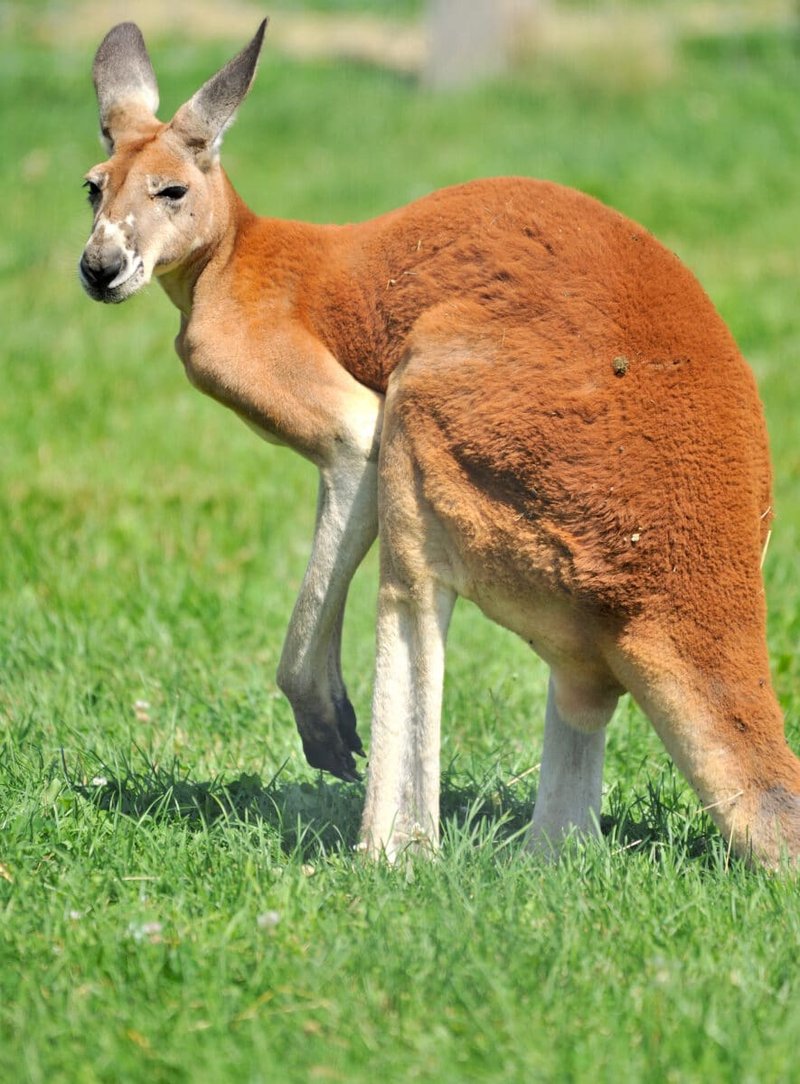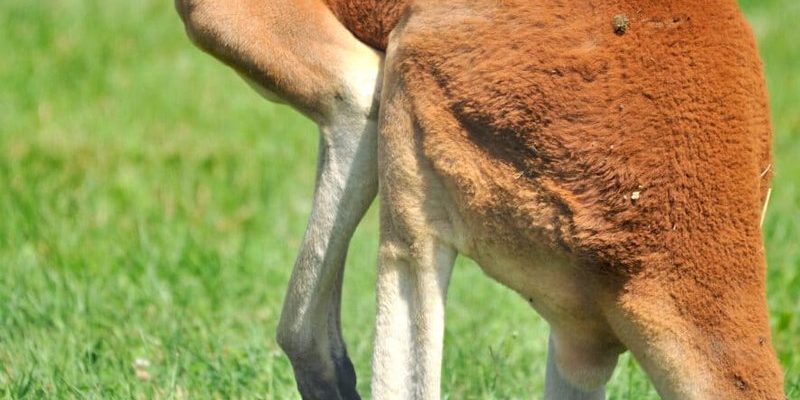
Understanding the red kangaroo not only gives us insight into their world but also highlights the beauty and uniqueness of Australian wildlife. You might find yourself chuckling at some of their quirky habits or simply appreciating their role in the ecosystem. So, grab a cup of coffee, and let’s hop into the top 10 facts about the red kangaroo!
1. The Largest Marsupial on Earth
When you think about size in the animal kingdom, the red kangaroo certainly makes a strong impression. It stands out as the largest marsupial worldwide, reaching heights of up to 8 feet (2.4 meters) when it stretches out on its hind legs. Just picture that for a moment—it’s like having a small person bouncing around in the bush!
These kangaroos can weigh anywhere between 50 to 100 pounds (22 to 45 kg). Their muscles are built for efficiency. While hopping might look easy, these powerful legs allow them to cover vast distances quickly—up to 30 feet (9 meters) in a single leap. Honestly, it’s a marvel to watch them in action.
2. Amazing Adaptations for Survival
Here’s the thing: the red kangaroo has some seriously cool adaptations that help it thrive in the hot Australian climate. They’re built for endurance rather than speed, which helps them travel long distances in search of food and water. Their long, sturdy tails act like a third limb, balancing them as they hop.
One fascinating adaptation is their ability to survive on very little water. Red kangaroos get most of the moisture they need from the leaves they eat. When things get tough, they can even lower their metabolic rate, conserving energy for days. Imagine being able to hit the pause button on your hunger during a heatwave!
3. Unique Social Structure
Kangaroos are known for their social behavior, but have you ever wondered how they interact with each other? Red kangaroos usually live in small groups called mobs. These mobs can be made up of several females, their young, and a few dominant males—talk about a living arrangement!
Males often establish a hierarchy through playful fighting rituals. They’ll stand on their hind legs and box with each other in what looks like a friendly brawl. It’s not just for fun; it’s their way of establishing dominance and winning the attention of females. You might be wondering if it’s all serious business—while it can get competitive, there’s a lot of playful camaraderie involved too.
4. Breeding and Life Cycle
Red kangaroo breeding is a fascinating topic. The females give birth after a short gestation period of about 30-35 days. However, here’s where it gets interesting: the tiny, underdeveloped joey climbs into its mother’s pouch, where it continues to grow and develop for several months. It’s like a protective little cocoon!
Once the joey is old enough, it will peek out of the pouch, eventually spending more time outside while still nursing. The mothers can actually pause the development of a new embryo until the joey is ready to leave the pouch. This ability to control their reproductive cycle allows them to adapt to changing environmental conditions. How incredible is that?
5. Communication Through Body Language
Kangaroos are not big talkers, but they have a robust communication system that relies heavily on body language. When you see them thumping their hind legs on the ground, they’re actually sending a signal to other kangaroos that danger is near.
They also use different postures depending on their mood. For example, if a kangaroo is relaxed, it might sit back on its tail, legs stretched out in front. But if it feels threatened, it’ll stand tall and alert, ready to hop away. This kind of communication is crucial for survival in the wild, where being aware of surroundings can make all the difference.
6. Habitat and Distribution
Red kangaroos are adaptable creatures, inhabiting various environments across Australia, from deserts to grasslands. Their ability to thrive in such diverse habitats stems from their unique adaptations. You’ll typically find them in open, arid regions where they can easily find food and water.
Interestingly, these kangaroos have learned to adjust to seasonal changes. They may move to different areas based on food availability and climate conditions. This mobility is essential, especially when water resources dry up during hot summers. It’s like they have their own travel plans based on what Mother Nature throws at them.
7. Diet and Feeding Habits
You might be curious about what fuels these incredible jumpers. Red kangaroos are herbivores, primarily munching on grasses and leaves. Their strong teeth are perfect for grinding down tough plant material. Interestingly, they tend to feed in the early morning or late evening when temperatures are cooler.
Since they can be quite picky eaters, their preference for specific grasses helps maintain the ecosystem balance. By grazing on certain plants, they promote new growth while preventing any one species from overtaking the area. It’s a natural way of keeping things in check—one meal at a time!
8. Conservation Status
Red kangaroos are currently classified as a species of “Least Concern” by the IUCN. This means they have a stable population and are not facing immediate threats, which is great news! However, it’s important to remember that their habitat is still vulnerable to changes due to climate conditions and human activities.
Conservation efforts are crucial to ensure these magnificent animals remain part of Australia’s wildlife. Programs focusing on habitat preservation and responsible land management go a long way in safeguarding their future. We can all do our part by supporting initiatives that protect their natural environments.
9. Cultural Significance
The red kangaroo holds a special place in Australian culture. It’s not just about cute postcards and souvenirs; these animals are deeply embedded in Indigenous Australian stories and traditions. They symbolize strength, resilience, and adaptability.
For many Indigenous communities, the kangaroo is more than just an animal; it’s a part of their spirituality and history. You’ll often find kangaroo motifs in art, storytelling, and even traditional ceremonies. This cultural connection adds another layer of appreciation to these majestic creatures.
10. Fun Facts to Wow Your Friends
Now that you’re well-versed in red kangaroo knowledge, here are some fun facts to impress your friends:
- Red kangaroos can reach speeds of up to 35 miles per hour (56 km/h) when hopping!
- Their feet are so strong that they can even walk on rough terrain with ease.
- They are quite social, often grooming each other to strengthen bonds within their mob.
- A baby kangaroo is born the size of a jellybean—now that’s tiny!
These snippets of trivia just go to show how fascinating red kangaroos are. Whether you want to impress someone or share a laugh, these fun facts are perfect for any occasion.
In conclusion, the red kangaroo is a captivating creature that embodies the essence of Australia’s unique wildlife. From its impressive size to its remarkable adaptations and cultural significance, there’s so much to appreciate about this iconic marsupial. The next time you find yourself daydreaming of the Australian outback, remember the red kangaroo—nature’s agile athlete, hopping into our hearts and minds.

